April 22, 2010
Integrating native plants; Wildflower garden tour preview; overgrown shrubs, fixing heavy soil
Although I got some of my first gardening lessons at the Lady Bird Johnson Wildflower Center’s original location, my garden is not all native. Instead, it’s a collaboration of cultural backgrounds, where columbine joins my sentimental “Joan’s pink poppies.”
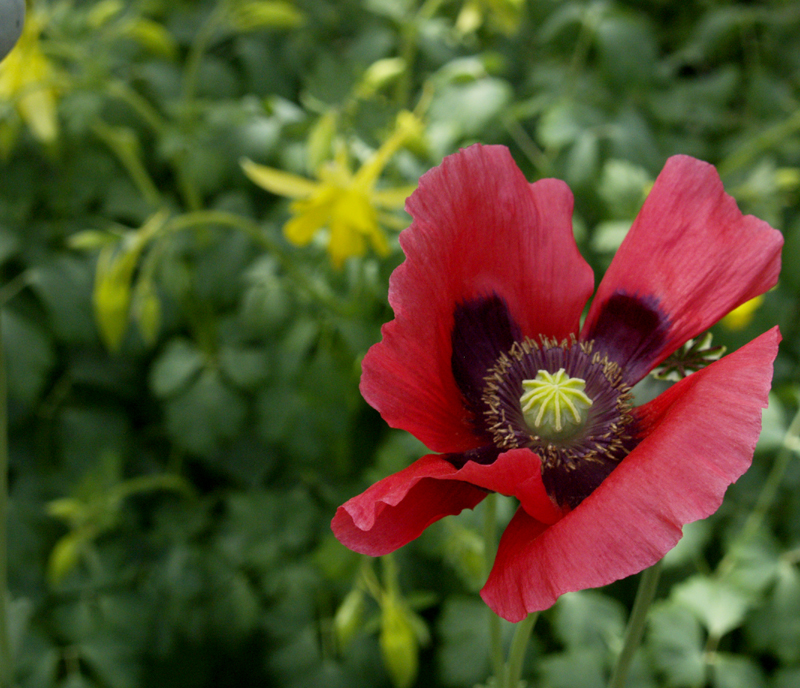
I’m thankful we rescued a few native spiderworts (Tradescantia gigantea) from the creek when it was being ravaged.
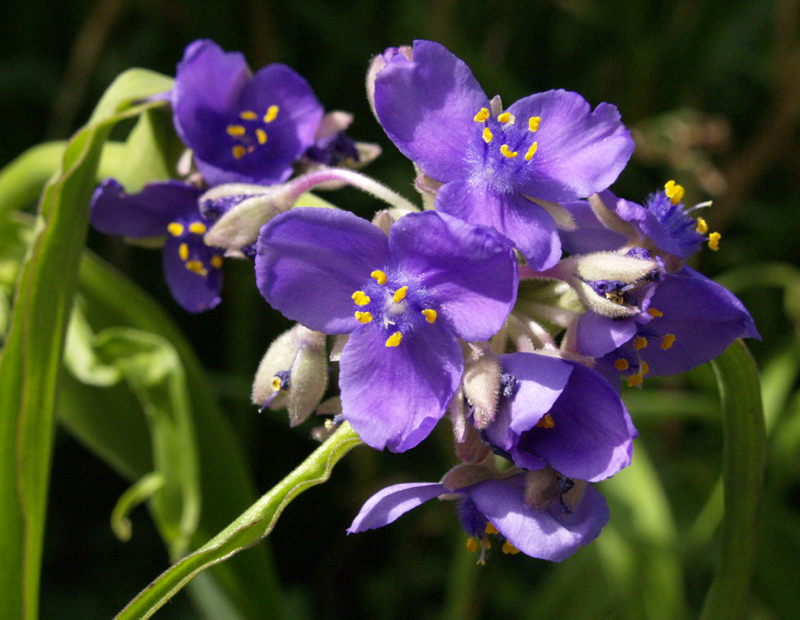
We’re delighted that seeds we’ve thrown back have taken hold. We’ll assist their creek bank self-sow with ones we collect from the garden. Now that they’re prolific, I move their progeny to attend blank spots left by winter-dormant turks cap and other sleepy winter perennials.
My Mutabilis rose isn’t native, but it’s as enduring as “wildflower” pink evening primrose, and provides the trouble-free screen I need on a chain-link fence in semi-sun.
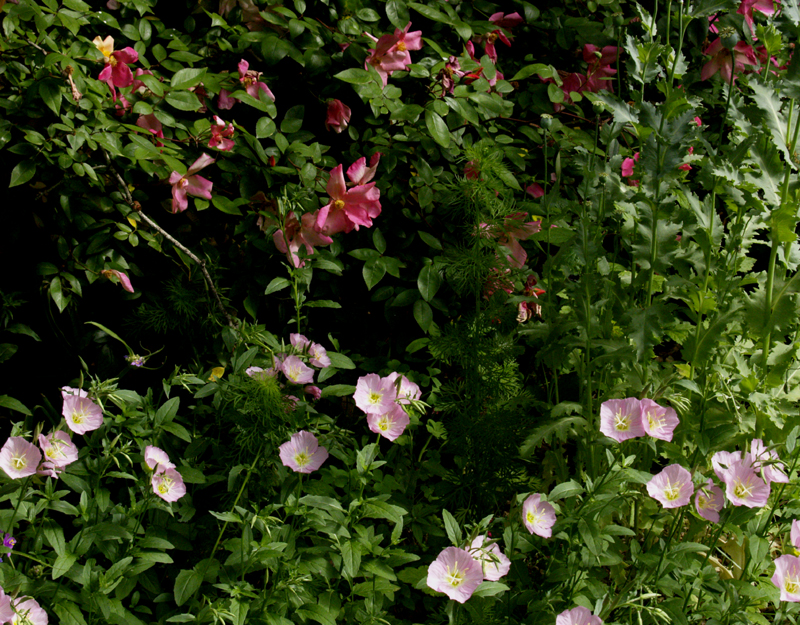
Beneath them, native Geum canadense (white avens) covers the ground.
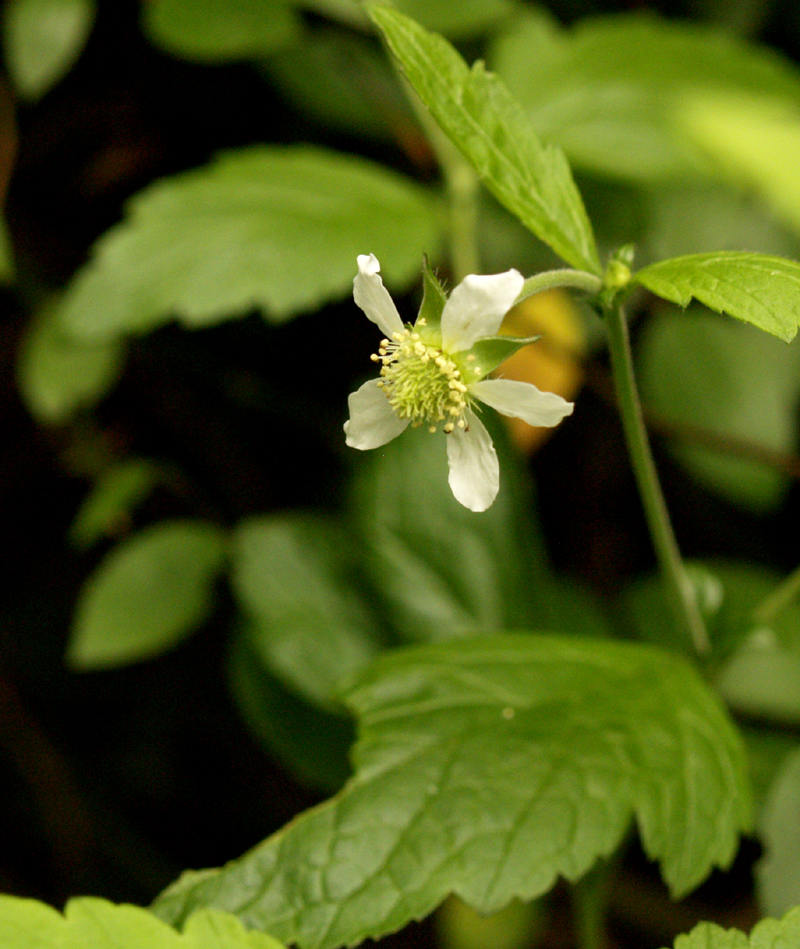
I admit I haven’t studied enough, but I know that many of the native plants I bring to my garden aren’t native to east Austin clay. And some of them are hybrids, where nature and nursery met. But every plant I bring home must be suited to my site.
One is Byzantine gladiolus, an heirloom that’s happily multiplied from a few tiny passalong corms.
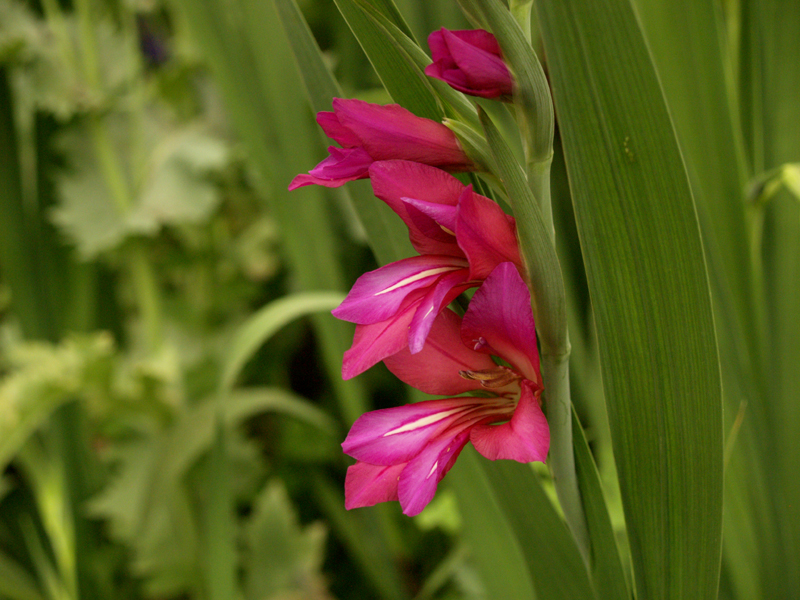
Long ago, I gave up on natives that are most content in rocky ground. Last year, I did build up decomposed granite mounds in the cat cove to try blackfoot daisy once again. One made it. It’s joined by South African Pelargonium sidoides, long-established native winecups, blue-eyed grass, and oregano so vigorous that it’s easy to strip for dinner. Bunnies Harvey & Gaby love it, too, to add to their indoor dinner menu (since the dandelions are gone for now).
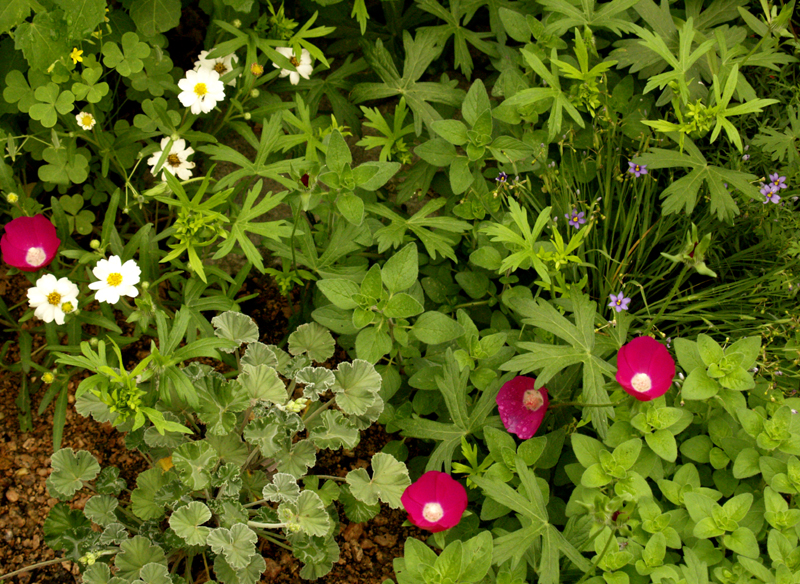
At the front of the cat cove, here’s white winecup.
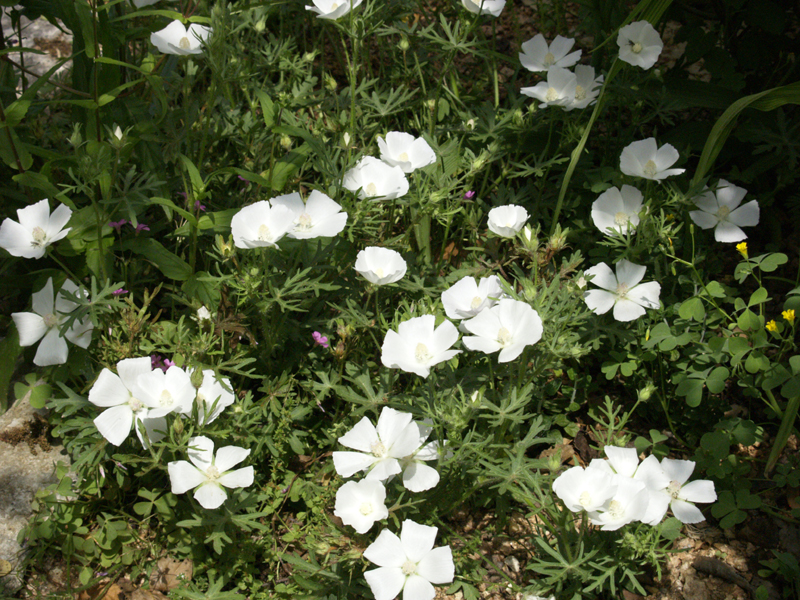
In many spots among winter dormant perennials, I’ve tucked in Freesia laxa, a South African bulb that naturalizes for us. Here, asters now flank its spidery foliage. Non-native artemesia peeks over for a look.
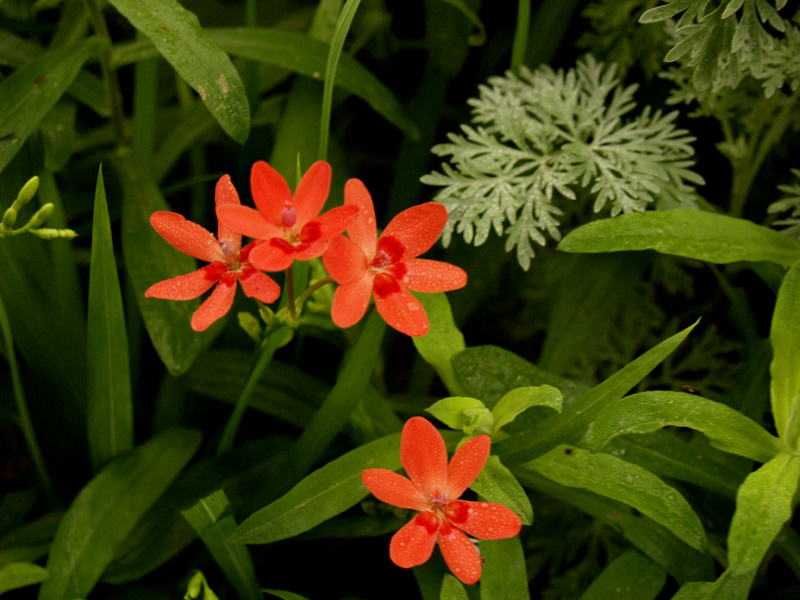
In the front porch bed, Salvia greggii joins silver germander, columbines, and Gulf coast penstemon (Penstemon tenuis).
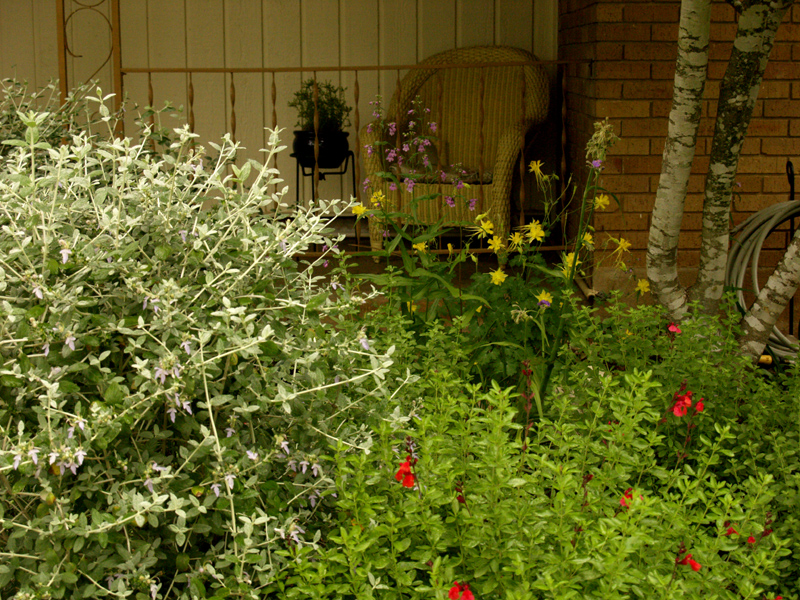
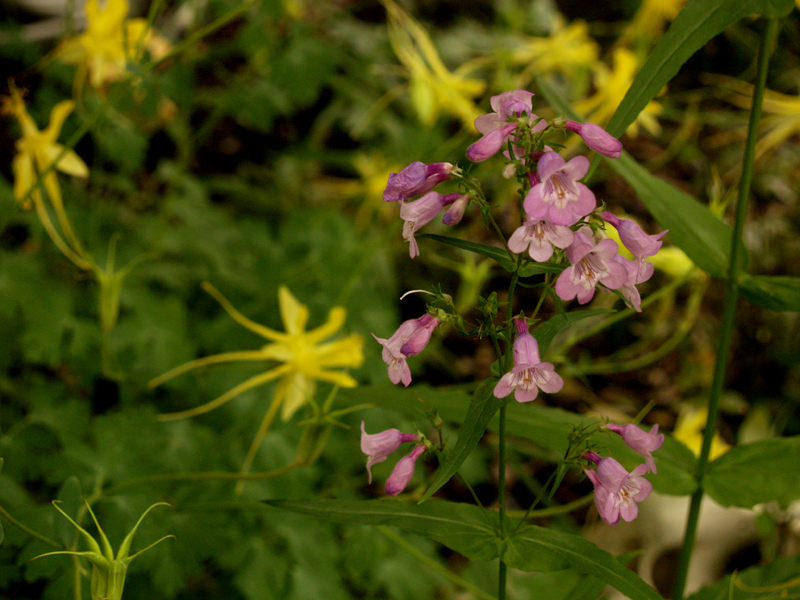
Beyond is Yucca recurvifolia. There’s also native Berlandiera lyrata, chocolate flower.
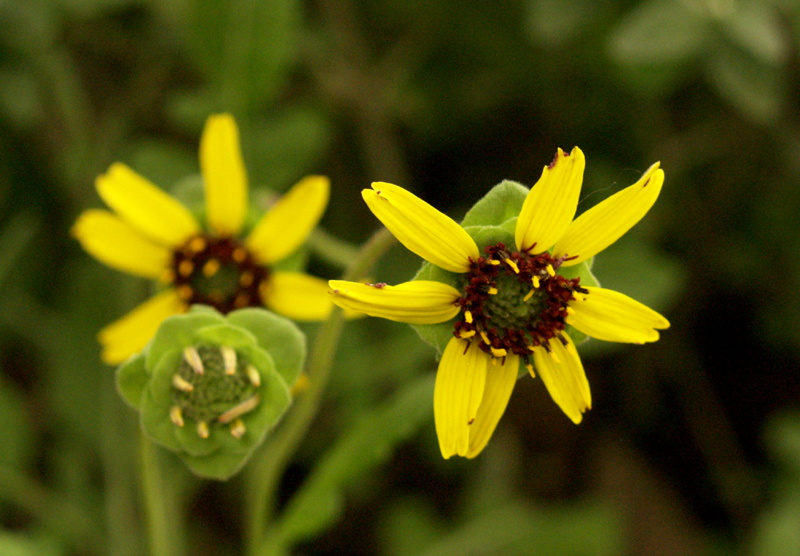
Since many of us of us are in the same boat: wanting natives but also other hardy plants, see how others have created a collaboration on this year’s Lady Bird Johnson Wildflower Center Gardens on Tour. This week on CTG, Tom meets with horticulturist Andrea DeLong-Amaya to give you a preview of these diverse and fascinating gardens.
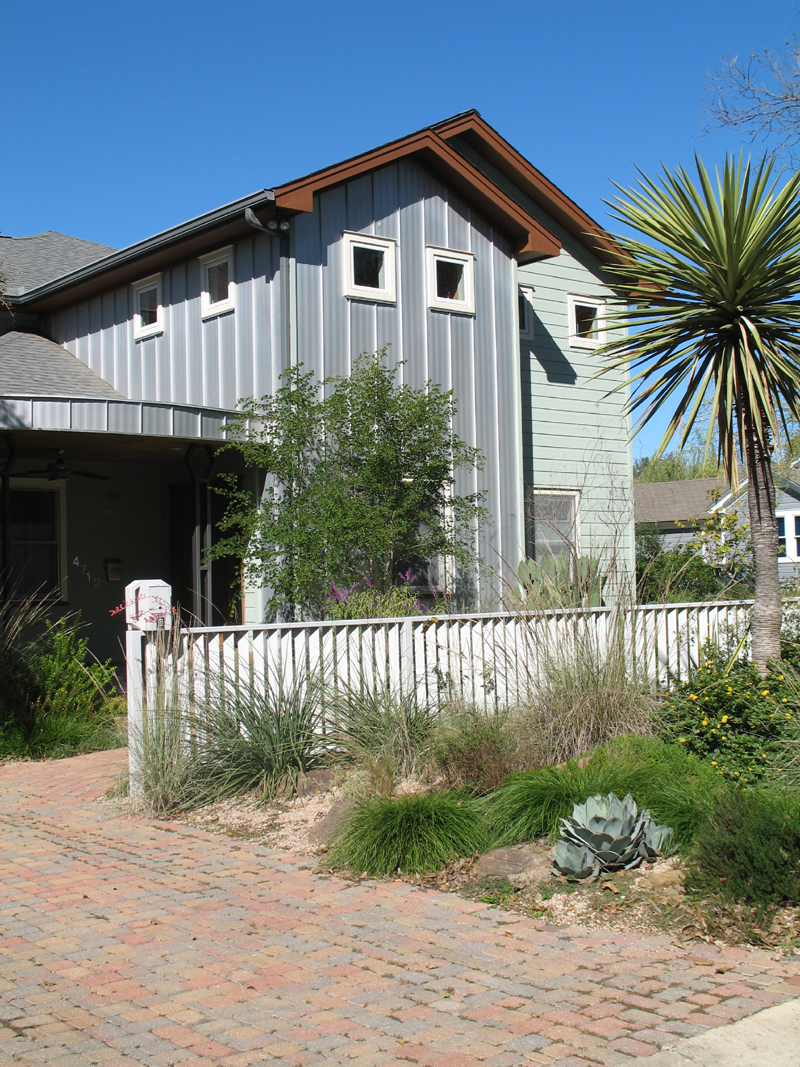
Mark your calendar for May 8 to gather ideas and meet the gardeners in person to see how they did it.
On our garden visit, you’ll note a few rain splotches on the camera lens. In order to feature Roxanne and Ira Yates’ Garden on Tour in time for CTG, we headed out in March. And wouldn’t you know it. That was the day we had cold pouring rain for hours. Roxanne kindly lent us a garbage bag and a heavy towel to reinforce Ed’s camera protection.
This land restoration, designed by Jennifer Schaffer, beautifully unites gardens and the wildlife habitat that the Yates are renewing. I’m actually glad we taped early, so you can see the structure that holds forth in winter with the promise of flourish to come. I believe this is an important concept for us to embrace: to follow the seasons, respecting each one in its own individual beauty.
Got shrubs out of control? We thank Rebecca, who sent in this picture of overgrown elaeagnus that came with her “new” house. Daphne explains how to deal with this common situation, just asking for burglars, you just know it.
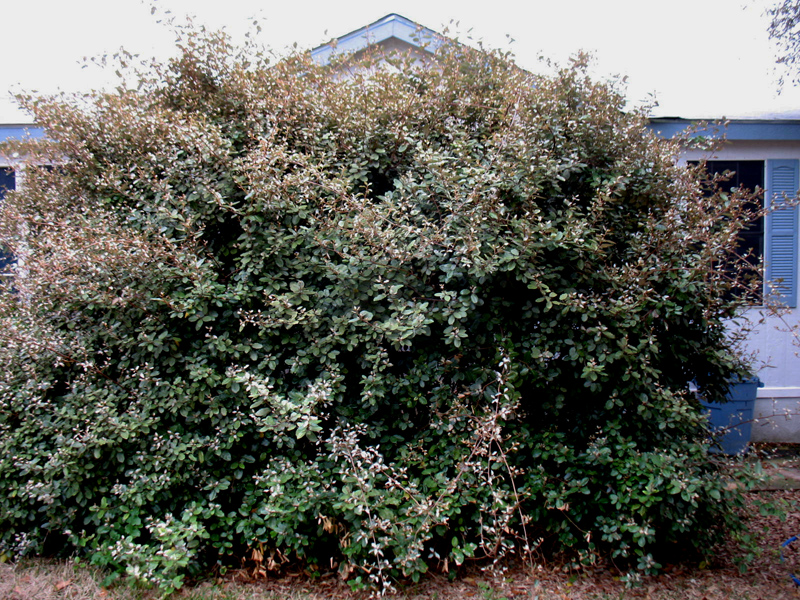
And I’m determined to find a spot for Daphne’s plant of the week, Mexican olive (Cordia boissieri). I first fell for it when visiting Jill Nokes’ garden. This one is just up the street from me, so it handles heavy soil.
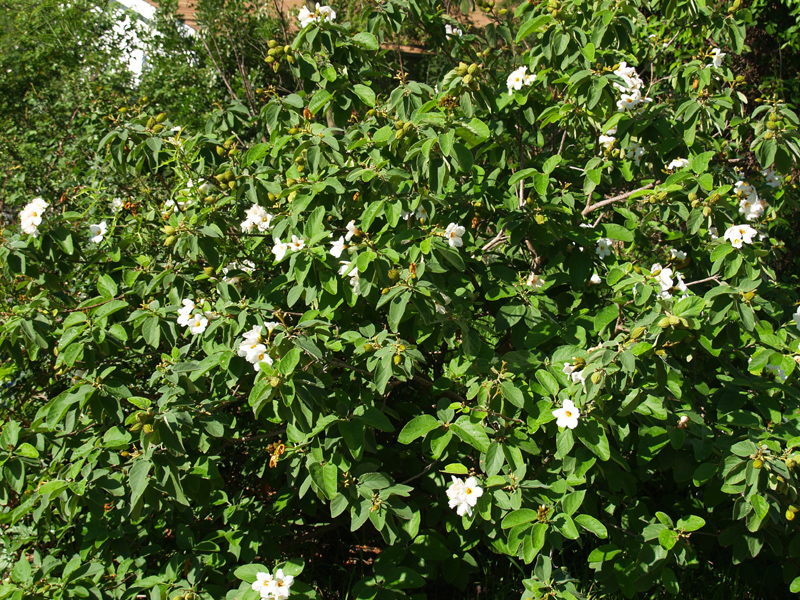
Since many viewers have also asked how to amend heavy soils, this week John Dromgoole explains how to do it.
Watch online anytime, since I know you’re as crazy busy in the garden right now as I am!
Until next week, Linda
tags:

